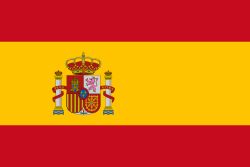In the heart of La Mancha, surrounded by landscapes of vineyards, scrubland, and Mediterranean brush, lies one of the most prestigious hunting estates in both the national and international scene. With more than 60 years of history, this territory combines exemplary game management with a deep respect for tradition, the environment, and sustainability. Its privileged location—just two hours from Madrid and easily accessible from major cities such as Valencia, Alicante, and Murcia—makes it an ideal destination for hunters seeking authenticity and quality.
Among its main attractions are the different hunting modalities available, each tailored to the tastes and preferences of every hunter. In this article, we take a detailed look at three principal forms: the traditional driven red partridge shoot, walked-up hunting with dogs, and stationary call hunting (reclamo). Each of these modalities has its own unique characteristics, with distinct rhythms, techniques, and emotions—transforming the hunting experience into a complete and highly personalized adventure.
1.Traditional Red Partridge Drive: The Soul of Hunting in La Mancha
The driven red partridge shoot is, without a doubt, one of the most emblematic and representative hunting modalities of traditional La Mancha. It is an ancestral practice that has been perfected over time thanks to decades of experience and an unwavering commitment to excellence. It is the ideal modality for those who wish to experience the true essence of group hunting, in a carefully maintained natural environment, with high-quality partridges that offer a challenging and authentic sporting experience.
1.1 What Does This Modality Consist Of?
In the traditional ojeo (driven shoot), hunters take fixed “pegs” while beaters and dog handlers, together with trained dogs, flush the partridges from their cover. These wild and spirited birds are driven in flight toward the shooting line, where hunters must demonstrate skill, speed, and precision. The excitement is guaranteed—partridges fly fast, high, and in unpredictable patterns, demanding great focus and refined technique. Additionally, the placement of each shooting position is carefully designed to ensure safety, visibility, and a balanced experience for all participants.
Key Features of the Ojeo:
- • Variety of terrains: More than 25 different drives, adapted to various weather conditions and types of vegetation, allowing for diverse hunting days without repeating the same setting.
- Exceptional-quality partridges: Thanks to sustainable management and meticulous habitat care, the partridges behave naturally, flying high and fast—an authentic challenge for any hunter.
- A complete experience: Each driven hunt includes breakfast, the traditional taco in the field, a countryside lunch, and dinner in an 18th-century manor house.
- Individual or group participation: Bookings are accepted for both individual hunters and organized groups, always maintaining a high level of personalized service.
1.2 When Is the Best Time for the Ojeo?
The driven partridge season runs from October to February, with the most recommended months being those of greatest hunting activity. During this period, hunting days are organized for both private groups and individual hunters. The weather conditions in La Mancha during these months favor long, demanding flights, enhancing the sporting value and excitement of every shot.
2. Walked-Up Hunting with Dogs: Action, Nature, and Harmony
Walked-up hunting with dogs is an ideal modality for hunters who enjoy direct contact with nature, walking through the countryside, and sharing the experience with their loyal canine companions. It is an intimate and active form of hunting, where every shot is earned through effort, strategy, and a deep connection between hunter and dog. This is a highly valued modality for those who wish to experience the pure landscapes of La Mancha, where every outing is an opportunity to reconnect with the essence of the countryside.
2.1 What Does This Hunting Modality Consist Of?
In this form of hunting, the hunter advances through the terrain alongside their dog, actively searching for partridges hidden among the vegetation. The dog, perfectly trained, plays a crucial role—detecting the birds’ scent, pointing them, and flushing them into flight so the hunter can shoot. It is a physically demanding style of hunting that requires good fitness, knowledge of the terrain, and patience. Communication with the dog is essential, as the success of the day largely depends on the dog’s sense of smell, obedience, and ability to work in perfect harmony with the hunter.
Advantages of Walked-Up Hunting:
- Variety of terrain: Specially prepared areas are available for this modality—scrubland, vineyards, fallow fields, and cereal plains—ideal for both the dog’s work and the hunter’s enjoyment.
- Authenticity and challenge: The partridges are wild, elusive, and fast, turning each outing into a true test of skill. The hunter must not only have good aim but also be able to read the terrain and anticipate the birds’ movements.
- Total flexibility: This modality can be practiced every day throughout the season, with outings adapted to the hunter’s level and experience—whether alone or accompanied.
- Personalized guidance: The hunting team accompanies the hunter to ensure safety, optimize routes, and make the most of the best areas depending on the season.
2.2 Best Time for This Modality
From October to March, walked-up hunting can be enjoyed every day, although the autumn months (September to December) generally offer the best thermal and visual conditions. The mild temperatures also allow for greater activity from the dogs, making the experience more comfortable and enjoyable. It is the perfect modality for those seeking an active, respectful form of hunting in harmony with the landscapes of La Mancha.
3.Call Hunting from a Fixed Blind: Strategy, Observation, and Hunting Tradition
Call hunting is one of the oldest and most traditional modalities of Spanish game hunting. In the fields of La Mancha, this practice reaches an uncommon level of authenticity and purity—perfect for those who wish to experience the magic of dawn in the countryside, the quiet tension of the wait, and the artistry of the call. It is a modality that demands deep ethological knowledge of the species and meticulous preparation of both the environment and the calling bird.
3.1 What Does This Modality Consist Of?
This form of hunting is based on the use of a male red partridge (reclamo), placed in a small cage or “tower” visible from the hunter’s fixed blind. The song of this male—bold and territorial—attracts other males in the area who approach with the intent to challenge or fight. It is at that moment that the hunter must remain alert and shoot with precision. Though seemingly passive, this type of hunting requires intense concentration, patience, and complete mastery of both the surroundings and animal behavior.
Why Choose Call Hunting:
- Well-positioned and protected blinds: Designed to minimize disturbance while ensuring clear visibility, these blinds are strategically placed in high partridge-traffic areas.
- Selected calling birds: Carefully chosen males with exceptional vocal qualities, accustomed to the setup and highly effective in attracting rivals
- Guidance and support: Expert advice on bird behavior, ideal conditions for each hunting day, and the strategic placement of the blind.
- An ideal setting for introspection: The calm of early morning, the beauty of the surroundings, and the restrained emotion make this form of hunting a unique, almost spiritual experience for many hunters.
3.2 Key Dates for Call Hunting
The best time for this modality is during the partridge’s mating season, from January 23rd to March 5th. During this period, males respond most aggressively to the song of the call bird, ensuring thrilling and technically demanding encounters. Though brief, this season is intense—making each day a unique and unforgettable opportunity for the experienced hunter.
4. A Complete Hunting Experience in the Heart of La Mancha
Hunting in this region is not merely about taking game—it is about immersing yourself in a complete experience that combines a passion for nature, hunting tradition, local gastronomy, and the renowned hospitality of La Mancha.
At the heart of this estate stands an 18th-century manor house, once a noble residence, which becomes the hunter’s home during their stay. With spacious lounges, en-suite rooms, fireplaces, a reading area, a spa, and homemade cuisine that honors the authentic flavors of La Mancha, we guarantee comfort, relaxation, and pleasure.
Each hunting day is meticulously organized: from the logistics of the ojeos (driven shoots), the preparation of walked-up routes, and the setup of call-hunting blinds, to the collection of game and internal transfers.
Every detail is carefully planned so that hunters can focus entirely on enjoying the environment and their passion.
The landscapes capture the essence of traditional Spanish hunting—adapted to the quality, comfort, and professionalism demanded by today’s hunters. Whether through the adrenaline of a driven shoot, the constant action of walked-up hunting with dogs, or the thoughtful strategy of call hunting, each modality offers a unique, intense, and deeply rewarding experience.
If you are looking for a place where hunting quality, environmental stewardship, and personalized attention come together to create an unforgettable experience, this La Mancha estate is your destination.




